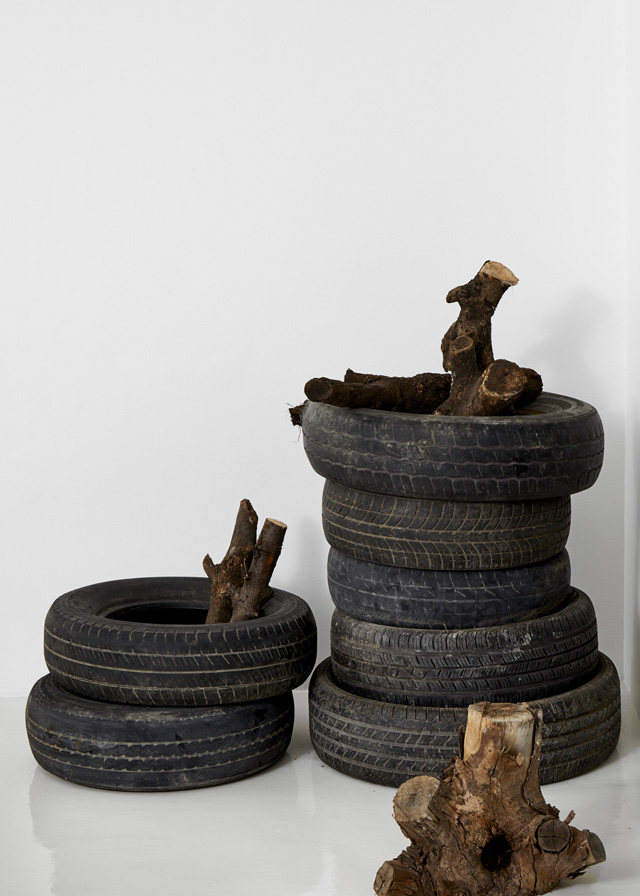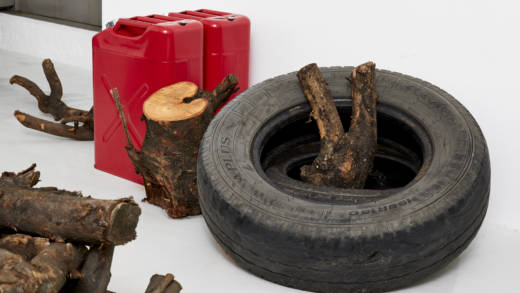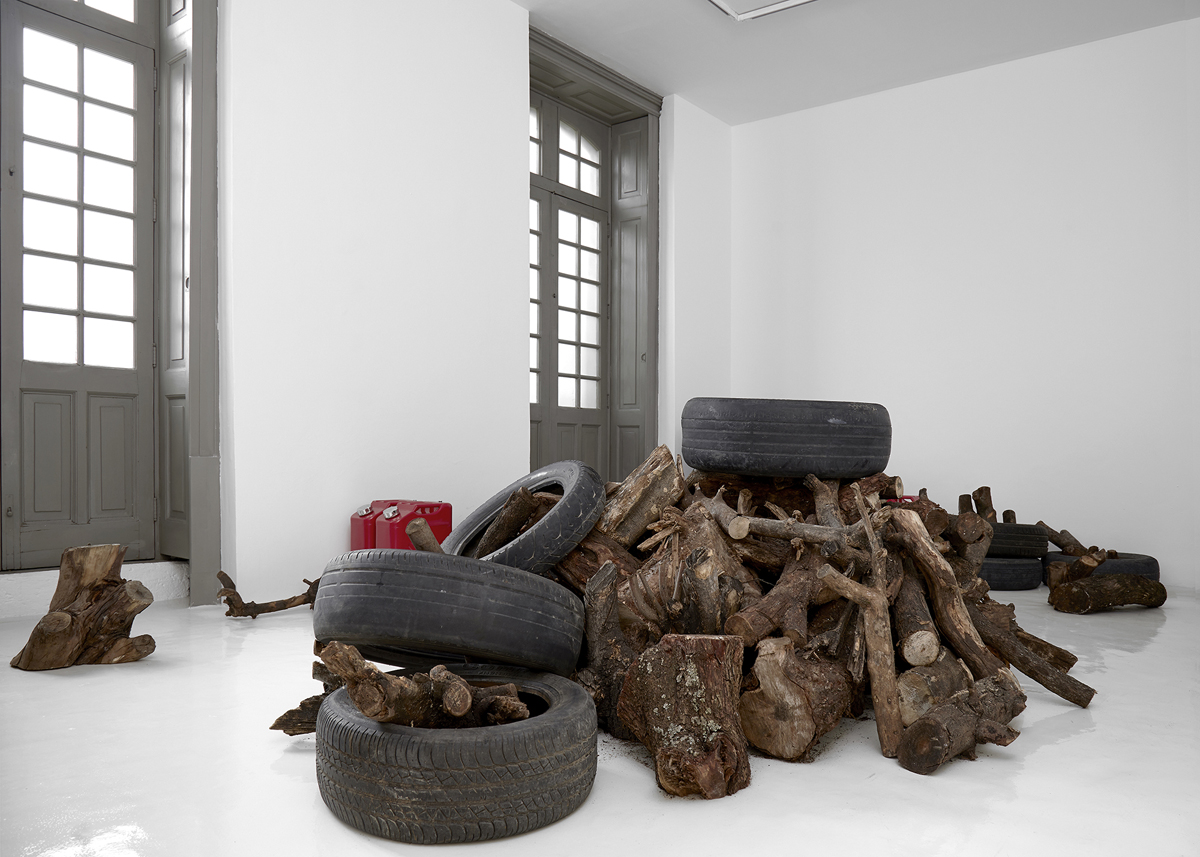The day Pyre opened at 3320 18th Street (an elusive and ambitious exhibition space known only by its address, without a website or social media presence), San Francisco’s air-quality index peaked at 158. “It’s much better today,” we said to each other.
Inside the building, through a door labeled “Cushion Works” and up a flight of stairs, people removed their N95 masks to encounter a room filled with 71 liters of gasoline, 23 used car tires and 760 kilograms of wood—the exact amount of matter forensic experts calculate is needed to fully incinerate one human body. And in that moment, Mexico City-based artist Joaquín Segura’s installation, already powerful, became locally haunting.
Pyre has been staged before; in each incarnation the artist sources rough chunks of wood, tires and metal cans of gasoline from the hosting city, arranging stacks and piles to fit each gallery. In San Francisco, 3320 18th Street’s L-shaped space allows for a heart-thudding reveal. Small groupings of material lead to an enormous, overwhelming mound around the corner, forcing the opening-night crowd of gallerygoers to situate themselves in the artwork’s rare negative space.

Segura’s installation deals in scale and precision. In the immediate, it addresses the 43 students from the Ayotzinapa Rural Teachers’ College who disappeared in Iguala on Sept. 26, 2014, and the Mexican government’s official account that they were kidnapped by police and turned over to a local drug gang. The gang, the government maintains, then killed the students and burned their bodies on a pyre in a nearby garbage dump.
A six-month investigation by the Inter-American Commission on Human Rights found that explanation “scientifically impossible.” And in Segura’s installation, the physical truth of that commission’s finding becomes clear. The amount of material needed to burn one body is immense. To burn 43 without a trace? Unimaginable.




